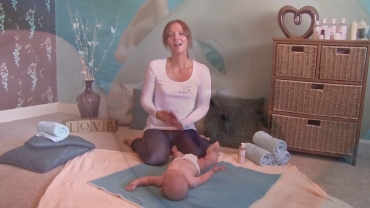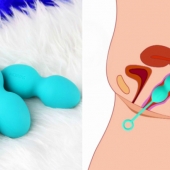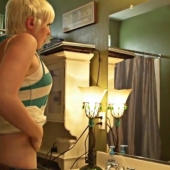What are the Bartholin glands?
The Bartholin glands are two small organs under the skin in a woman's genital area. They are on either side of the folds of skin (labia) that surround the vagina and urethra. Most of the time, you can't feel or see the Bartholin glands.
The Bartholin glands make a small amount of fluid that moistens the outer genital area, or vulva. This fluid comes out of two tiny tubes next to the opening of the vagina. These tubes are called Bartholin ducts.
What are Bartholin gland cysts?
If a Bartholin duct gets blocked, fluid builds up in the gland. The blocked gland is called a Bartholin gland cyst. These cysts can range in size from a pea to a large marble. If the Bartholin gland or duct gets infected, it's called a Bartholin gland abscess.
Bartholin gland cysts are often small and painless. Some go away without treatment. But if you have symptoms, you might want treatment. If the cyst is infected, you will need treatment.
What causes a Bartholin gland cyst?
Things like an infection, thick mucus, or swelling can block a Bartholin gland duct and cause a cyst. Infected Bartholin cysts are sometimes caused by sexually transmitted infections (STIs). But they can also happen when you don’t have sex.
What are the symptoms?
You may not have any symptoms if the Bartholin gland cyst is small. But a large cyst or an infected cyst (abscess) can cause symptoms. Symptoms of a cyst that is not infected include:
- A painless lump in the vulva area.
- Redness or swelling in the vulva area.
- Discomfort when you walk, sit, or have sex.
- Symptoms of an infected cyst include:
- Pain that gets worse and makes it hard to walk, sit, or move around.
- Fever and chills.
- Swelling in the vulva area.
- Drainage from the cyst.
How are Bartholin gland cysts diagnosed?
You may find a Bartholin gland cyst on your own. Unless it is causing symptoms, you may not know you have one. An abscess is diagnosed based on signs of infection, such as fever or swelling, and pain in the vulva area. In some cases, especially if you are older, your doctor may remove the cyst to make sure that it isn't cancer or another problem.
How are they treated?
Some Bartholin gland cysts go away without treatment. You can take a nonprescription pain medicine to relieve pain. To help healing, soak the area in a shallow, warm bath, or a sitz bath.
A sitz bath is one in which the hips and buttocks are put in water. It is usually used to promote healing and symptom relief around the bottom, such as for hemorrhoids, or genitals, such as for pain following childbirth.
There are different types of sitz baths to choose from, many of which can be purchased at medical supply stores. A common type is a basin that fits on a toilet seat and is filled with water.
Don't have sex while a Bartholin cyst is healing: If the cyst is infected, it may break open and start to heal on its own after 3 to 4 days. But if the cyst is painful, your doctor may drain it. You may also need to take antibiotics to treat the infection.
To keep the cyst from closing and filling up again, your doctor may put a small drainage tube with a small balloon at one end inside the cyst. The balloon is inflated inside the cyst to keep the cyst open. After the gland has healed, the tube and balloon are removed.
For severe cysts that keep coming back, you may have surgery to remove the Bartholin gland and duct. There is a procedure called marsu-pia-lization in which a pouch is created by making a cut over the cyst and stitching the sides together. This allows the cyst to drain. Don’t be scared of your bartholin gland.
- 509 views













